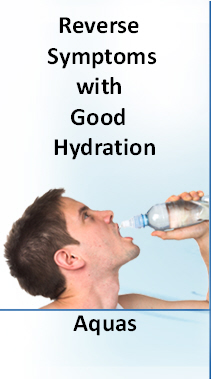Click the arrow below to hear my interview with Bill McAnalley PhD who discusses why food can fix things that drugs can’t. His discussion focuses on explaining the causes of Parkinson’s and lists the foods needed to treat each cause.
Information about Dr. McAnballey’s company, is accessed by visiting Aroga
Below are the talking points that Dr. McAnalley prepared for my interview with him on Parkinsons Recovery Radio where he explains why food can fix things drugs cant
Parkinson’s disease (PD), characterized with bradykinesia, static tremor, rigidity and disturbances in balance, is the second most common neuro-degenerative disorder. Alzheimer disease is first.
With the global trends in aging, the incidence of PD has increased year by year and the prevalence rate is up to 12% among the elderly over the age of 65 years. So far, there is still no exact cure for PD due to its diversity of etiology and complexity of symptoms.
Currently, Parkinson’s disease is treated with Levodopa and maybe Monamine, Oxidase Inhibitors (MOAs) or Acetylcholine inhibitors. Levodopa makes more Dopamine available for the dopamine receptor, MOAs increase the amount norepinephrine, dopamine and serotonin at their prospective receptors and acetylcholine inhibitors make more acetylcholine available to its receptor.
None of which address the physical cause of the disease.
The cause of PD has not been completely elucidated, but it has been generally acknowledged that the improvement of oxidative stress is one of the most important patho-physiological mechanisms.
Dr. Bill’s research has focused on stopping the causes of diseases like Parkinsons by:
- The inhibition of oxidative stress:
PD patients are in a state of oxidative stress. Oxidative stress is caused by the increase of free radicals in the organism, while the ability to eliminate free radicals is decreased at the same time. A large amount of lipid peroxide, such as Malondialdehyde (MDA), hydroxyl, carbonyl, etc., will cause cell death, which leads to neuronal apoptosis ultimately.
The mitochondria is the power plant and energy conversion station of cells. It also regulates the process of gene expression and apoptosis. Recent reports have suggested that mitochondrial dysfunction is closely related to a variety of neuro-degenerative diseases including PD.
- The reduction of toxic Excitatory Amino Acids (EAA):
Glutamate (Glu), Also, gamma-aminobutyric acid (GABA) and enkephalin can can produce excitotoxicity effects on nerve cells. Glutamate creates an excitatory effect on nerve cells, and is toxic when Dopa Amine neurons are fully or partially degenerated.
- The inhibition of neuroinflammation:
Neuroinflammation is a common and important pathological mechanism in nervous system diseases and different neurological diseases are involved in neuroinflammation at some stage. At present, it is believed that neuroinflammation was involved in an important cascade reaction in neuronal degeneration of PD.
When the central nervous system suffers from exogenous antigens stimulus, such as pathogenic microorganisms or foreign bodies, microglia will be rapidly activated. Then, the activated microglia cells can secrete various cytokines such as IL-1β, IL-2, IL-4, IL-6, TNF-α, and IFN-γ, etc. The cytokines cause neuroinflammation.
- The inhibition of neuronal apoptosis:
Parkinsons is caused by the premature death of dopaminergic neurons by abnormal apoptosis activation. Energy for normal activities of brain cells comes directly from aerobic energy, and there is little energy storage. However once brain damage occurs, it will cause nerve cell apoptosis or death.
The Bcl-2 family of proteins regulate apoptosis. It is divided into two categories:anti-apoptosis gene (such as Bcl-2, Bcl-xL, Bcl-w, Bcl-1, etc.) and pro-apoptosis gene (such as Bax, Bak, Bad, Bid, etc.). Their ratio regulates apoptosis.
- The inhibition of abnormal protein aggregation:
Mis-folded and aggregated proteins play a key role in the pathogenesis of Parkinsons Disease. Protein aggregates differ from disease to disease. This common characteristic shows that protein deposition is toxic to neurons.
Studies confirmed that the activity of the proteasome dropped substantially in substantia nigra of patients with PD, which weakened the ability of the substantia nigra to degrade α-syn and other proteins.
- Targeting Nrf2 to Suppress Ferroptosis and Mitochondrial Dysfunction in Neurodegeneration:
Nrf2 is a basic leucine zipper (bZIP) protein that regulates the expression of antioxidant proteins that protect against oxidative damage triggered by injury and inflammation. Several drugs that stimulate the NFE2L2 pathway are being studied for treatment of diseases that are caused by oxidative stress.
Listing of Core Food Ingredients that Address the Structure and Functional Causes of the Disease
- The inhibition of oxidative stress:
Brahmi, Bacopa monnieri
Maca root powder, Lepidium meyenii (Walp.)
Tongkat Ali (Longjack), Eurycoma Longifolia
Turmeric root powder, Curcuma longa
- The reduction of toxic Excitatory Amino Acids EAA:
Brahmi, Bacopa monnieri
- The inhibition of neuroinflammation:
Turmeric root powder, Curcuma longa
Wild Yam root, Dioscorea villosa
- The inhibition of neuronal apoptosis:
Noni Fruit, Morinda citrifolia
- The inhibition of abnormal protein aggregation:
Amia powder, Emblica officinalis
Turmeric root powder, Curcuma longa
- Targeting Nrf2 to Suppress Ferroptosis and
Mitochondrial Dysfunction in Neurodegeneration.
Chaga Mushroom, Inonotus Obliquus
Milk Thistle Seed Extract, Silybum marianum.
Tongkat Ali (Longjack), Eurycoma Longifolia
Aroga
Dr. Bill offered suggestions on the products he recommended for persons diagnosed with Parkinson’s. He recommended three Aroga products: (1) the Core
(2) the Plus Brain and Nerve
(3) the Bone, Joint and Endocrine (which supports hormones). At a minimum. the Core would take top priority.
Information about these products and the opportunity to order is available at:
https://arogalife.com/parkinsons-recovery
Sadly, Aroga products can only be shipped to locations in the United States.
Robert Rodgers PhD
Road to Recovery from Parkinsons Disease
https://www.parkinsonsdisease.me
References:
Front Pharmacol. 2017; 8: 634. The Mechanisms of Traditional Chinese Medicine Underlying the Prevention and Treatment of Parkinson’s Disease.
Front Neurosci. 2018 Jul 10;12:466. Targeting Nrf2 to Suppress Ferroptosis and Mitochondrial Dysfunction in Neurodegeneration.







